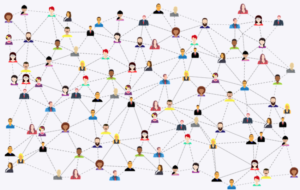Regional and Ethnic Dialects in the U.S.
Regional and Ethnic Dialects in the U.S.
When you hear American dialect, most people think of a speaker with a thick Boston accent or southern twang, for instance. However, these are only two of the approximately twenty-four regional dialects here in the U.S.
Regional Dialects
Regional dialects have been influenced over the years by geographical boundaries, socioeconomic backgrounds, generational changes, outside influences, and other individual factors. However, it’s difficult to determine the exact number of dialects within the U.S. With a loose definition of dialect, thousands of cities and towns would have their variation.
A great visual representation of the most widely accepted 24 U.S. regional dialects is The Dialect Map of U.S. English from Robert Delaney in Figure 1-1. Notice that there are more dialectal variations on the East Coast vs. West Coast of the U.S.

Ethnic Dialects
Regional dialect is just one category. There are also ethnic dialects, or ethnolects, which are spoken by members of a particular ethnic group. The two most known ethnic dialects in the U.S. are African American Vernacular English (AAVE) and Chicano English (or Hispanic Vernacular). Most speakers are monolingual and live in urban areas around the U.S.

Code-Switching
Communication doesn’t happen in a vacuum. Without a doubt, people interact with speakers of various dialects throughout their day-to-day lives. Humans can change their vocabulary, grammar, style, and expressions to match the communication partner or setting. This is called code-switching, also referred to as dialect switching or changing your register.
This means that you may speak one way with friends or family and another in a business or formal setting. This, of course, can come as a benefit and a cost to the speaker. One advantage may be that the speaker is able to fit in with their immediate surroundings. Conversely, one cost could be that the speaker feels that they are putting on an act and not being true to themself.
The ability to code-switch doesn’t come equally for everyone. It is a learned behavior, and some speakers may not have the models to help them navigate this pattern successfully. So, how do we level the playing field for all speakers? How can we decrease the stigma around specific regional and ethnic dialects? Let me know your thoughts in the comments below?
For more information on idiolects, check out my blog Idiolects.

2 Comments